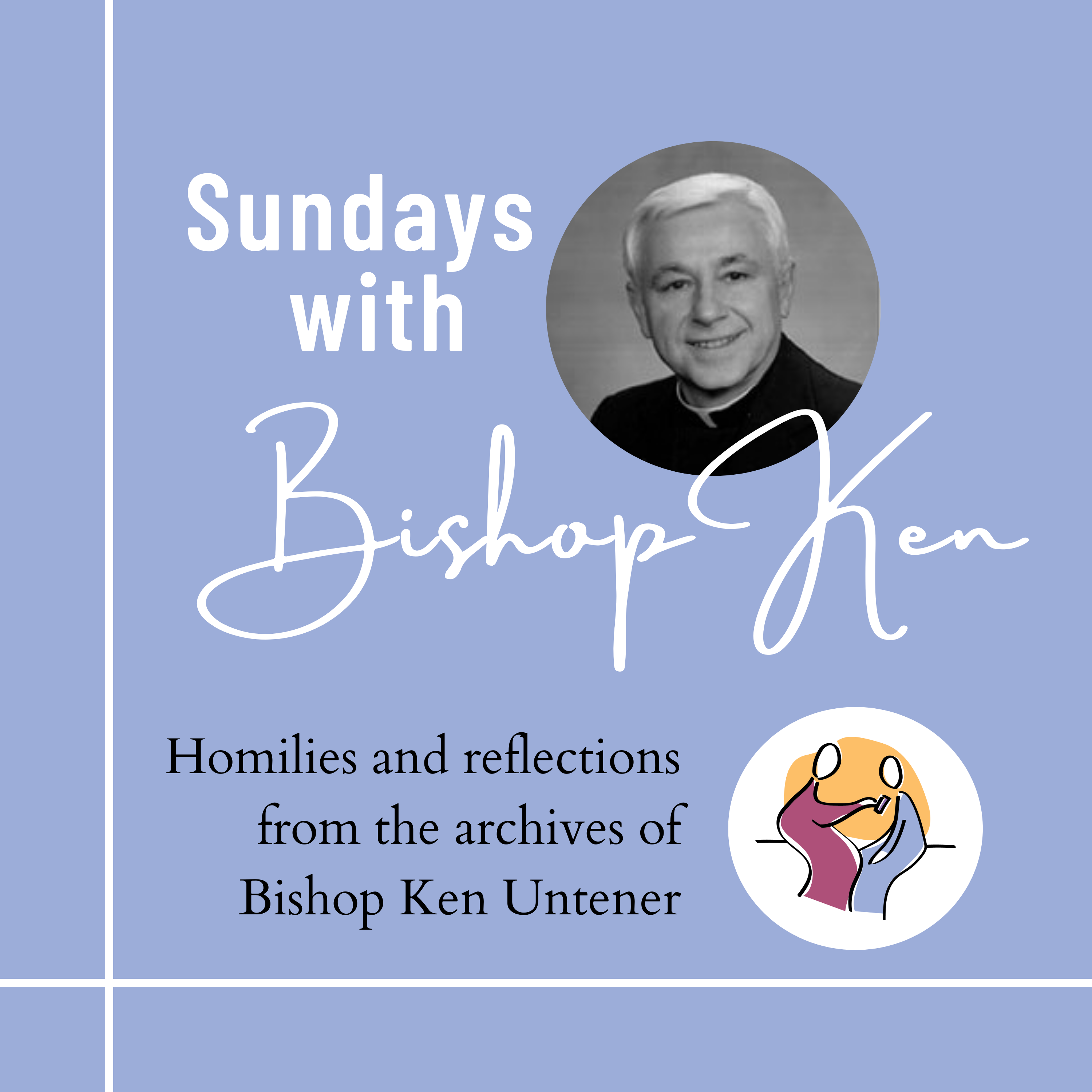Episode Transcript
[00:00:04] Welcome to Sundays with Bishop Ken, a weekly podcast brought to you by the publishers of little books of the Diocese of Saginaw.
[00:00:22] Each Sunday of ordinary time, the gospel and Bishop Ken's homily are proclaimed by members of our faith community.
[00:00:32] During the seasons of Advent, Christmas, Lent, and Easter. Our Sunday prayer time will be taken from the little book's reflections for that season.
[00:00:43] We are pleased to spend this quiet time with you today.
[00:01:02] Welcome to today's for April 7, also known as divine Mercy Sunday.
[00:01:19] On the last day of the Easter Octave, the church celebrates divine mercy Sunday. It is all about the merciful and unfathomable love of God.
[00:01:31] This feast doesn't go back centuries. It was established just a few decades ago by Saint John Paul II when he canonized a polish nun named Sister Maria Faustina Kowalska on April 30, 2000.
[00:01:51] According to Saint Faustina, Jesus desired the message of his mercy to be proclaimed around the world, a message of hope for all people.
[00:02:02] The image associated with divine mercy shows two rays of light coming forth from the Sacred Heart of Jesus, a red ray and a pale ray.
[00:02:15] They represent the blood and water that gushed forth from his pierced side on the cross.
[00:02:21] Saint Faustina said that is how the Lord appeared to her. He requested his image be painted and a signature added along the bottom with the words, Jesus, I trust in you.
[00:02:35] The feast of divine mercy is associated with the private revelations of Saint Faustina in the 1930s that she recorded in her diary.
[00:02:46] According to the diary of Saint Maria Faustina Kowalska, divine Mercy in my soul, which was published after her death, extraordinary graces are offered to those who go to confession and receive holy communion on the feast of divine mercy.
[00:03:13] Let's turn to our reflection for today, remembering that on Sundays we reflect on the season rather than read from the New Testament.
[00:03:24] The quest for faith the 20th chapter of John's Gospel tells of a quest for faith.
[00:03:32] Upon discovering the empty tomb, John says that the beloved disciples saw and believed Mary Magdalene met Jesus in the garden and didn't recognize him until he called her by name.
[00:03:47] And then she believed.
[00:03:49] The apostles were huddled in the upper room, frightened by all that had happened.
[00:03:55] Then Jesus appeared to them, and they believed. Thomas, however, was not there. Only when Jesus came back and Thomas saw him did he believe.
[00:04:21] Faith is a quest.
[00:04:24] Faith is also a struggle because faith involves growth, and growth is never easy.
[00:04:31] Examination of conscious books, enlisting possible sins often ask, did I doubt my faith?
[00:04:40] That question has caused a lot of misunderstanding.
[00:04:44] It really should.
[00:04:46] Did I refuse to face the doubts about my faith?
[00:04:51] The decision to believe, to live by faith.
[00:04:57] The decision to believe, to live by faith, is the decision to live in the midst of much doubt.
[00:05:06] We doubt for many reasons. We doubt because we believe that there is more to life than we know right now.
[00:05:16] There is always a new angle, always a new question, always more to learn.
[00:05:25] Faith is never meant to be static and finished. It is intended to grow throughout our lives.
[00:05:35] To do this, we have to have the courage to admit the darkness and bring it into the light of Christ.
[00:06:13] Thank you for sharing some quiet time with the Lord today.
[00:06:21] Please consider supporting this podcast by clicking the donate link.
[00:06:29] For more information and other prayer resources, go to littlebooks.org.
[00:06:36] May your day be blessed.


